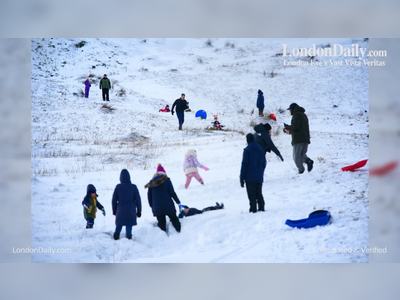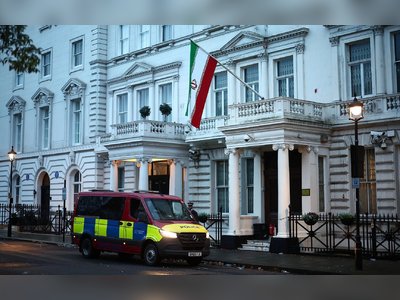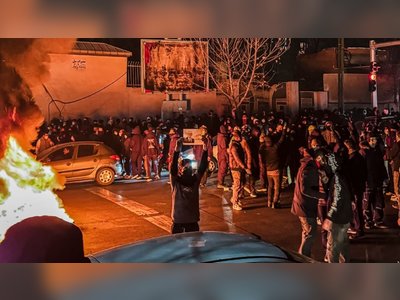
Caribbean resorts now seeing big drops in RevPAR, occupancy
According to data from STR, hotel occupancies across the Caribbean began dropping in April and continued to steadily slip through the summer.
In August, overall occupancies in the region fell 5.6% from the same period last year, to 62.5%. Likewise, Caribbean RevPAR started trending downward in June and July, eventually falling 5.3%, to $112.54 for August.
"Room supply in the Caribbean continues to grow at around 3% [year-to-date], which is certainly healthy," said Jan Freitag, STR's senior vice president of lodging insights. "But that growth is happening while demand is weakening, and that then translates into occupancy declines. And if there are occupancy declines, we normally see rate growth get hit. Still, this is a market-by-market situation, and not everyone in the Caribbean is being impacted the same way."
Among the destinations hit hardest by slowing demand is the Dominican Republic, which was left reeling this summer after a spate of tourist deaths there led to a steep drop-off in bookings. In June, following widespread media coverage of the incidents - which many consumer media labeled "mysterious," even though most were quickly found to have been due to natural causes - STR reported that hotel occupancies in the Dominican Republic plummeted 12.7%, to 66.6%.
Occupancies dropped further in July and August, down 20% and 16.2%, respectively, while August RevPAR in the D.R. dipped nearly 26%, to $69.82.
Frank Comito, CEO and director general of the Caribbean Hotel and Tourism Association (CHTA), said, "The D.R. has seen a drop in RevPAR and ADR, which hopefully they can get back up. If one of the [market] leaders is having to discount in order to bring back business that they've lost, that's not good for the entire region. But typically, when we see a destination have some unfortunate publicity like this, the impact lasts for several months, and then it actually starts rebounding rigorously."
According to Julie Banning, a travel advisor with New York-based Embark, the Dominican Republic is primed to bounce back, and the bad press appears to be petering out.
"I don't think this is going to affect the D.R. in the long term," Banning said. "Our clients feel confident when they travel to the five-star resorts there, and we have a lot of repeat travelers who want to continue going to the D.R. And nowadays, when you look at the news, where did that story go? Everyone seems to have moved on. I think we'll see the numbers going back up this winter."
A rebound in the D.R. alone, however, might not be enough to solve the Caribbean's hotel occupancy problems. Cuba and Puerto Rico also saw summer business slow, with the former impacted by the Trump administration's travel restrictions and the latter facing lingering challenges following 2017's Hurricane Maria.
"There's still this image out there that Puerto Rico is recovering from the hurricane," Banning said. "Some people still think there's devastation, when that's not true."
For August, Cuba's occupancy slipped 13.1%, to 50%, and RevPAR in the market dropped 31.5%, to $31.77, according to STR. Concurrently, Puerto Rico's occupancy was down 4.3%, to 68.1%, and RevPAR fell 3.3%, to $123.12.
Meanwhile, the fact that traveler misconceptions continue to plague Puerto Rico certainly doesn't bode well for the Bahamas, which just last month was battered by Hurricane Dorian.
But while the vast majority of the Bahamas was spared any significant damage - with destruction largely limited to Grand Bahama and the Abaco Islands -- both Banning and Comito expressed concern about post-storm consumer perceptions.
"Only 20% of the Bahamas has been impacted," Comito said, "but the rest of the country is still dealing with the perception that they've been affected."
Threatening to further exacerbate the region's woes is the demise of tour operator Thomas Cook, which abruptly ceased operations in late September. Although the company's German airline, Condor, has remained in business with the help of a government-backed loan, the group's collapse is expected to hamper European lift to the Caribbean.
Sue Springer, director for corporate and government relations at London-based trade and investment consultancy the Caribbean Council, estimated that Thomas Cook accounted for 62% of all Caribbean flights from Germany and roughly 10% of Caribbean flights from the U.K.
Comito listed Barbados, St. Lucia, Jamaica, Cancun and the D.R. as destinations most likely to be impacted.
"We were expecting 400,000 visitors during the remainder of the fall season and winter season via Thomas Cook, and that includes Condor [business]," he said. "However, the German government bailing Condor out will protect a good portion of that business, around 60% of that 400,000."
Comito said he is optimistic that the gap left by Thomas Cook will soon be filled, with the CHTA working to attract tour operators and "find alternative ways to meet" existing European demand.
He also remains optimistic about the Caribbean as a whole, pointing to positive trends in Turks and Caicos, Aruba, Anguilla and Barbados as well as an improving outlook for Cancun, where issues surrounding higher-than-usual levels of sargassum appear to be subsiding.
"I wouldn't say there are any yellow flags for the whole region yet at this point," Comito said. "Out of the 16 destinations reporting for August, nine of them were up on occupancy, and seven were down. Assuming we don't see an acceleration of any kind of global economic downturn, growth in demand has kept up with supply, and we're hopeful that will continue.










